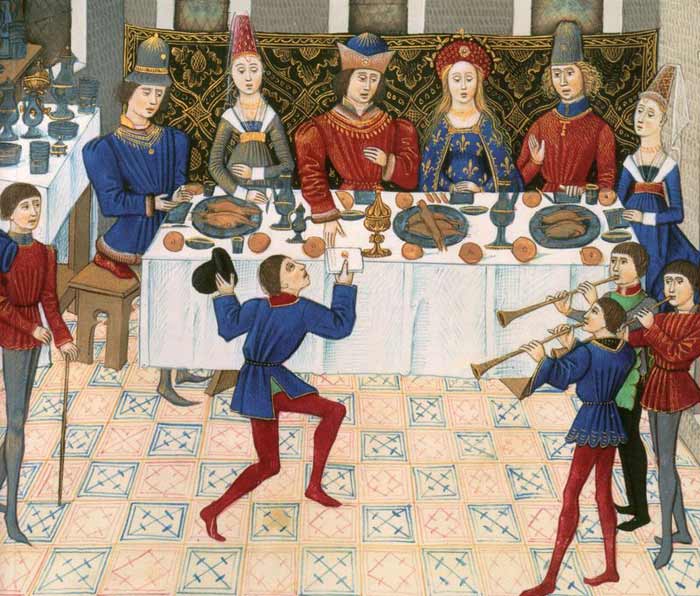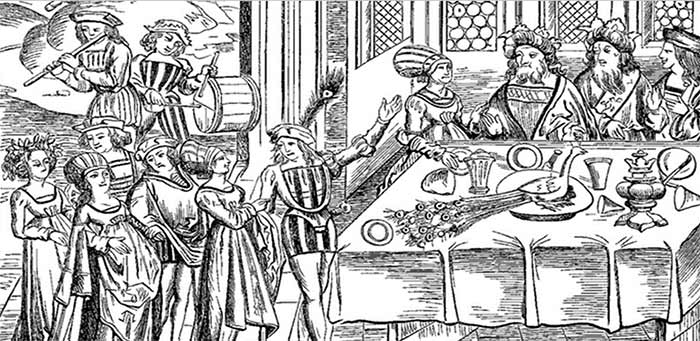The banquet was the Renaissance symbol of power: it was used to amaze, to marvel, to make everything more special and extraordinary. Through the grandiose and splendid image of its own court, in fact, the Nobility could evoke admiration and respect in everyone: princes, friends and enemies, ambassadors, bankers, men of culture and artists, nobles, courtiers and plebeians. There are many musical, choral and theatrical sources and examples (that have continued until today) of these great feasts, and the following two performances are among the proposals La Rossignol has so far produced regarding banquets of this type.

Intermezzi deliziosi
Food and Wine in Music
in Italian renaissance courts
“Chi vuol esser lieto, sia, di doman non c’è certezza” (“Whoever wants to be happy, let him be so: about tomorrow there’s no knowing”) are words written by Lorenzo the Magnificent in his most famous carnival song.
This “recipe for happiness”, encouraging people to enjoy life and the pleasures that come with it, was the heart of Renaissance banquets, great occasions for amusement, meetings and for sharing the pleasures of food and music.
We have found a lot of descriptions of Renaissance feasts and banquets: at the same time meal and performances, where culinary delicacies, pieces of music, songs and dances alternated in a whirlwind of sounds, colours, fantasy and magnificence, with the only aim to astonish and amaze friends and enemies.
The concert wants to recreate not only the truthfulness of that epoch, but also its fascinating emotions, with songs and pieces of music composed and performed in castles, palaces, taverns or popular feasts.
Group: from 4 to 9 performers (nine performers if the vocal quartet is required)

La cena del Paradiso
The dinner of paradise: Italian Renaissance food,
intermezzos, music and dance
The Renaissance banquet is full of sounds, colours, fantasy, splendour: it aimed at being amazing, astonishing, at letting everything appear more extraordinary and splendid.
In it, you can appreciate food with all the five senses: sight, smell, taste, touch and also hearing, because every plate, served with the suitable wine, is presented and accompanied by specific music and dances.
The quantity of food is now of little consequence: the quality and the chefs’ creativity are much more remarkable and important.
Menus and recipes are prepared according to seasons, occasions and the position of the stars.
Nobles with their retinues take part in Renaissance banquets and for this reason.
They represent an interesting and curious section of social life.
Through a splendid and magnificent image of his own court, the Prince can create an atmosphere of admiration and respect in people on whom his fortunes depend: sovereigns, friends and enemies, ambassadors, bankers, men of culture and artists, noblemen, courtesans and plebeians.
Exactly as happened during those feasts, we will present theatrical intermezzos with music and dance, in order to recreate the joyful, cultivated and aristocratic atmosphere of that nobility.
Group : from 6 to 15 performers (Musicians and dancers)



